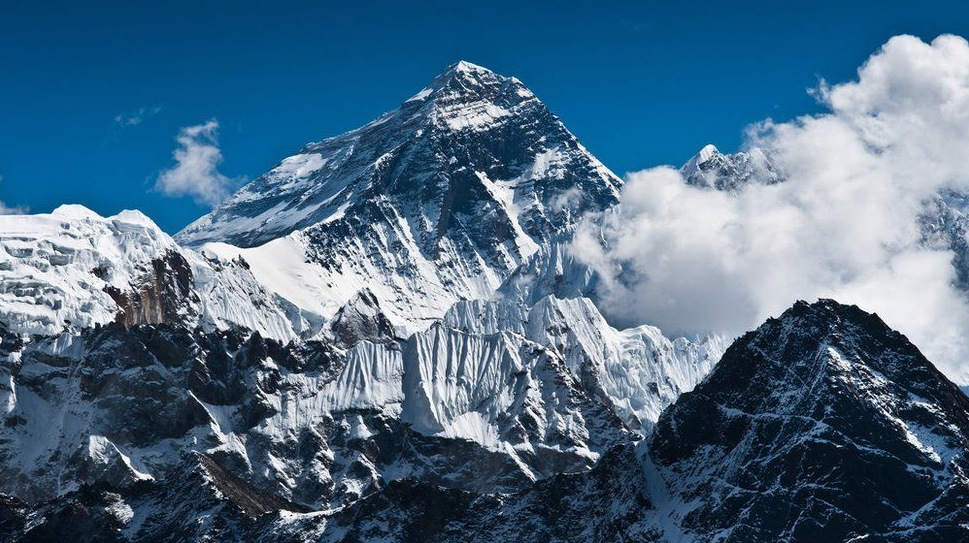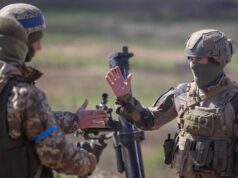Tracing Legacy Of Everest : Seven Decades Later
‘It is not the mountain we conquer but ourselves’—Sir Edmund Hillary
Post By Colonel Satish Singh Lalotra


Seventy years is a life time in a human being’s existence on this planet of ours where the life expectancy though having increased substantially is pegged much below at 69.8 years for men and 74.9 years for women at a global level.
The first confirmed ascent of Mt Everest, the highest peak in the world on May 29th 1953 by Sir Edmund Hillary Tenzing Norgay a Nepali Sherpa has slipped into the pages of history in exactly so many years(70) as mentioned above.
Led as part of the British expedition by John Hunt, it is very often heard of this event as ‘Not climbing a mountain, but opening entire new vistas in mountaineering’ to the rest of the world ‘.
Striking at the dizzy height of 8849 meters, with all the attendant vagaries of weather and vicissitudes of a risky sports event both of the above mentioned mountaineers have branded themselves into the psyche of world as one of their own kind not to be cowered by the intangibles thrown into their climbing paths.
Fast forward seven decades and what we have today is grand celebration in Nepal, as also inauguration of Sir Edmund Hillary visitor’s center in Khumjung ,and a museum in Tenzin Norgay’s name in Namche Bazar’ the main hub of all climbers on to the highest peak in the world. After them in 70 years more than 6000 climbers have made the attempt with some hitting the summit while others lost forever in the labyrinthine of ‘Death zone’ an area which is more than 8000 meters or 26,500 feet high. The proverbial ‘Final frontier’ for all the mountaineers of the world, Mt Everest still packs in itself that shining allurement for those who seek to push their physical and mental threshold which is unthinkable in the realm of an ordinary human being. Notwithstanding the above, passage of 70 years since human being’s first imprint on Mt Everest calls for a rewind into the so called ‘Indian connection’ for its gaining worldwide importance.
It was in the year 1856 that Mt Everest was labeled as world’s highest peak, just a year prior to the famous ‘Indian mutiny of 1857’. It was in the year 1802, when the British EIC (East India company) under the watchful eye of ‘Great Trigonometrical survey’ set the ball rolling of conducting survey in the Indian sub-continent . The trigger being the intense ‘Great Game’ under play between the then two super powers the Czarist Russia and England of the world in the early/mid to late 19th century . This survey primarily envisaged carrying out survey of forward limits /boundaries of our sub-continent bordering the watershed line formed by the Himalayas, our traditional natural barrier from the wild north.
Undertaking of painstaking surveys of uncharted snow bound peaks in the Himalayas was one of the defining roles of this ‘Great Trignometrical survey’ of India. This called for ascertaining the height of this range too. But then survey parties on ground faced a problem which was not of their making—Nepal and Tibet both which had maximum of these peaks never used to allow foreigners on their soil for a task like this. A big diplomatic push was accorded to do the same after the formulation of ‘Treaty of Siguali’ in 1816 between Royal Nepalese government and British India following the Anglo-Nepalese war of 1814-1816 where after the survey parties reached till the Indo-Nepal border in 1830.But still Nepal had lots of reservations for foreigners milling around in its country on one pretext or the other. This prompted the GTS (Great Trignometrical survey) to Willy-nilly start the survey operations from the terai region of India . Survey in those days had to grapple with multitude of problems ranging from extreme cold ,unseasonal rains ,malaria to name a few leaving a window of about 3 to 4 months of active survey in a year.
In the year 1843 ‘Andrew Scott’ became the new Surveyor General of India and started in the right earnest surveys from Bhagalpur in Bihar ,Pilibhit in UP and Darjeeling from West Bengal .It was under his expert directions that Mt Kanchenjunga was surveyed in 1847 totaling a height of 28 thousand and some feet above the Msl. In the course of conducting the survey of Mt Kanchenjunga Andrew Scot found another peak much higher about 230 kms jutting into the azure blue sky line.Scot’s deputy ,John Armstrong surveyed this peak from another place and named it as ‘Peak B’ while recording at the same time in his daily diary that ‘ Peak B’ seemed to be higher than Mt Kanchenjunga. But then Andrew scot was a hard task master and didn’t rely on his deputy’s assertion, forcing another of his subordinate ‘James Nicholson’ to take more observations of this ‘B’ peak.
James took 30 observations from 5 different locations of this particular peak and pegged it at 30,200 (thirty thousand two hundred feet) .But then James made a cardinal mistake in his observations when he didn’t cater for the typical ‘Light refraction’ making his data go totally haywire.Before Nicholson could take his efforts to fruition, he was struck by malaria and had to leave his survey stations post haste. For further calculations this Peak’ B ‘was termed as ‘Peak 15’. It seemed that this peak 15 was becoming a dead Albatross hanging around the neck of GTS(Great Trigonometrical survey of India) when sheer providence brought an Indian by the name ‘Radhanath Sikdar’ who solved this puzzle of ascertaining the height of Peak 15 in 1852.
Radhanath Sikdar was a Bengali who had joined the GTS in the year 1831 on a monthly salary of Rs 30. Since he was good in mathematics he was sent to Dehradun to take part in the Trignometrical surveys which was an ongoing endeavour of the British as mentioned above. After working for few years he was reverted back to the Calcutta office of GTS where he was asked to join forthwith the survey teams busy in mapping the Himalayas. Radhanath was employed in the capacity of a chief computer with the mandate to analyze the data so collected by the instruments.
Working with Andrew scot he was employed for mapping the heights of peaks of Himalayas from Darjeeling. During one such survey he used the simple formula of ‘Pythagoras theorem’ by basing one point of a triangle at the highest point of peak 15 with the other two points of the triangle on ground as reference points.
Ascertaining what angle the two points on ground were making /extending at the highest point on peak 15 he came up with the height of peak 15. Simple trigonometry to explain his methodology of calculation stumped the best of minds at GTS. In his seminal book—‘Everest, The mountaineering history Walt Unsworth has written that when the data of Everest was first published it came to be known that it was Radhanath’s work which had defined the height of the world’s greatest peak.
The book by Walt Unsworth has recorded that the then GTS ,Surveyor general Sir George Everest was so impressed by the work of this Bengali Surveyor that he kept him as his right hand in all his future surveying tasks in the country. But the book also says that despite this Bengali surveyor’s excellent role in ascertaining the height of Mt Everest, he had to bear the brunt of racist policies of his British masters. In one such incident Radhanath is supposed to have complained against his British senior Mr Henry Thuiler at Calcutta on grounds of his gross inefficiency in the year 1858. This complaint of his bounced back on him fresh as it was in the background of the recent 1857 mutiny with British tempers still high against the natives. Thuiler complained against Radhanath to GTS Surveyor general who reprimanded the latter for his audacity to write against his British senior with a caveat to tender an unqualified apology letter.True to his convictions Radhanath wrote a letter and apologized but only for his language and not for the allegations leveled against his British senior.
Based on the exact calculations of Radhanath Sikdar the final data of Mt Everest was presented in front of the ‘Asiatic society’ with Andrew Scot recommending the name of this highest peak to be after Sir George Everest. After lots of brain storming the ‘Royal geographical society’ in the year 1865 named peak 15 as Mt Everest. The most anticlimax part of this narrative was that Sir Everest was least interested in naming the peak after him. Keeping the status of the GTS surveyor general in mind and the dominating culture present at that time he was more than compensated for the task which was the singular contribution of an Indian. In the year 1861 edition of ‘The manual of surveying of India’ mentions the name of Radhanath sikdar as a computing head ,whereas in the 1875 edition of the same manual his name was found missing. In one of the websites known as ‘Live History India’ it was mentioned that efforts were mounted to find out the whereabouts of this great Indian when in the year 2011 researchers stumbled upon by chance a place known as ‘Chnadan nagar’ a place about 50 kms from Kolkatta where a street named after this great surveyor from India was still in vogue. It was later learnt that after retirement he came and settled down here where he breathed his last in the year 1870.
It was by chance that I penned this write up as a mark of remembrance for the 70 th year of ascent of any human being on the highest point of the earth called as Mt Everest. More so I was made to remember the literature of GTS (Great Trignometrical survey) which was kept at HMI ,Darjeeling (Himalayan mountaineering institute ) where I had gone to attend a rock climbing course as a Capt while still in-service from Bagrakot ,WB . HMI, Darjeeling has in its precincts the famous ‘Tenzing rock’ where the first timers are taught the ropes of rock climbing graduating to later on more advanced courses of mountaineering. It remains within our domain to resurrect the great works of Indians like Radhanath Sikdar whose singular contributions were hijacked by our colonial masters with impunity.
(The writer is a retired army officer and Columnist. He can be approached on his email…slalotra4729@gmail.com)




